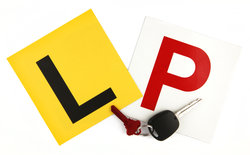
I have Congenital Nystagmus but I Want to Drive!
Case Study:
Dr Elaine Wong
Presentation
16yo boy with congenital nystagmus and vision R 6/24 L 6/24 BEO 6/18 comes in for consultation hoping to be able to drive. What can you do to help?
16 yo boy comes in for consultation with mother hoping to get learner’s driving licence. With the history of Congenital Nystagmus and poor vision since a young age, he knew that obtaining a driving licence can be challenging. However, he is clutching onto the hope that you can help him.[/vc_column_text]
On examination:
- R c 6/24 L c 6/24
- BEO 6/18.
Wearing glasses of R & L +2.00/-0.50×180 and cycloplegic retinoscopy shows these glasses are correct for him.
Cover test shows no strabismus.
Ocular motility:
Nystagmus with right beat to right gaze and left beat to left gaze. There is also a latent component to his nystagmus i.e. when right eye is cover, the fixing left eye beat to left; when left eye is cover, the fixing right eye beats to right.
Abnormal head posture:
He does not adopt any abnormal head posture to achieve best vision and he also has a convergence null.
The rest of his eye examinations are normal.
What can we try to improve his vision?
- Base out prisms
This is to utilise the convergence null of this child. By prescribing base out prisms in both eyes, you induce convergence and increases the foveation time. This in turn may help to improve his binocular distance vision.
Typically, you use 7∆ base out prism in each eye. This will cause unwanted induced accommodation as well, so it will require an additional -1.00 for clear vision in pre-presbyopic patient.
So for this patient, I will suggest:
- R & L +1.00/-0.50x 180 with 7∆ base out prism
- Soft contact lens
If base out prism doesn’t help, I will then try and prescribed him with soft contact lens for his hypermetropia of +2.50.
Contact lens improve vision more than the optical effect alone. It increases foveation time by stimulating conjunctival proprioceptors and may help to improve binocular distance by 1 line to allow him to drive.
- Surgery
Artificial divergence surgery
Once again this utilises the convergence null. This involves bilateral medial rectus recession to create an artificial “exophoria” that will drive convergence. This will require good motor and sensory fusion. I often make sure that I can demonstrate fusion by putting up 7∆ base out prisms in both eyes first.
This procedure is expected to improve vision and field of vision. However, it carries a 10% risk of consecutive exotropia.